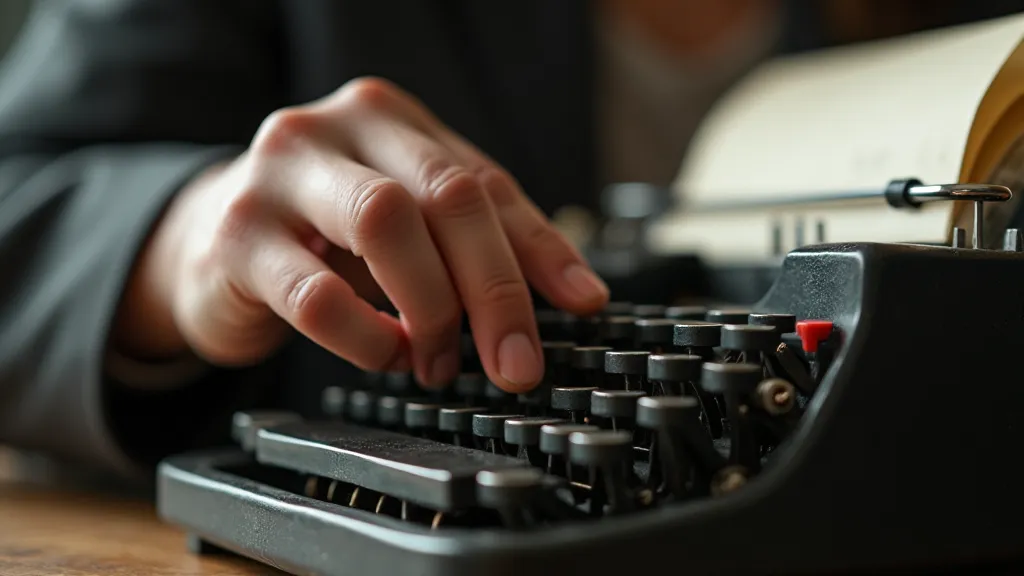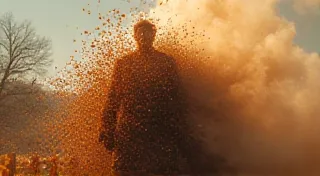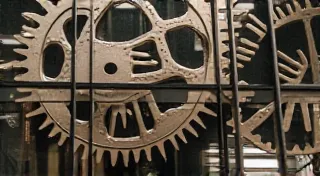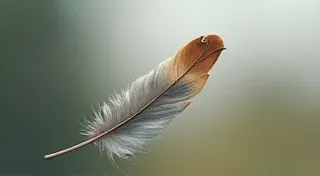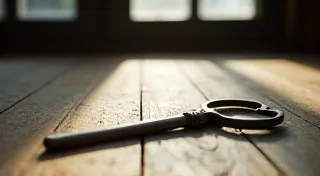The Alchemist’s Legacy: Transforming Decay into Narrative Gold
There's a particular scent associated with time, especially potent when mingled with ink and aged paper. It's the fragrance of a forgotten office, a writer’s sanctuary, a history quietly unfolding. It clings to vintage typewriter ribbons, an aroma that speaks of countless stories penned, drafts discarded, and moments preserved within the delicate nylon or silk. They are more than just office supplies; they're relics, witnesses to an era when creation was a deliberate act, a mindful engagement between the hand, the mind, and the machine. These ribbons, often brittle and faded, hold a certain melancholy beauty – a promise of narrative gold waiting to be unearthed.
My own fascination began with my grandfather, a journalist who chronicled local politics for a small-town newspaper. His desk was a monument to a bygone era: a massive oak affair cluttered with stacks of paper, a rotary phone, and, of course, his Underwood typewriter. The ribbons, a rainbow of colors slowly fading to grey, were scattered around like fallen leaves. I remember, as a child, being mesmerized by the way he’s typed – a rhythmic clatter that filled the room, the faint hiss of the carriage return, the satisfying imprint of the letters on the page. He rarely spoke about the process itself, the craft of writing, but the typewriter—and those ribbons—were silent instructors, embodying the discipline and dedication required to translate thought into words.
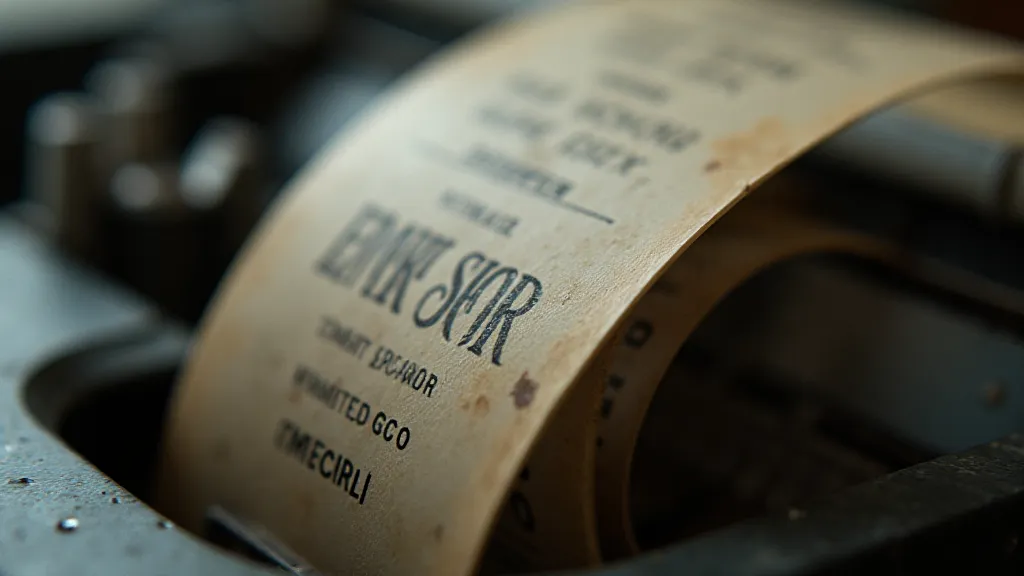
The Ribbons’ Silent History
The history of typewriter ribbons is inextricably linked to the evolution of office technology. Early ribbons, in the late 19th and early 20th centuries, were typically made of silk, painstakingly woven and dyed. These were incredibly delicate and prone to breakage, requiring frequent replacement. As technology advanced, nylon ribbons began to replace silk, offering greater durability and vibrancy. The colors themselves – often a range of deep reds, blues, and greens – reflected the aesthetic sensibilities of their time. Imagine the countless letters, legal documents, poems, and novels that were created using these now-fragile artifacts. Each ribbon holds a fragment of history, a silent testament to the human need to communicate and create.
Consider the profound sense of ephemerality that permeates these objects. The act of writing on a vintage typewriter demanded a different mindset, a heightened awareness of the permanence of the ink and the relative scarcity of materials. This contrasts sharply with the ease of digital creation, where words flow freely and mistakes are effortlessly erased. The concept of lasting impact and the responsibility that comes with it resonated deeply with the writers of that era. To truly understand the past, one might explore the echoes of these forgotten tools, a journey akin to navigating the Obsidian Archive, where stories are unearthed from the reliquaries of time.
The transition from silk to nylon ribbons was more than just a technological upgrade; it was a reflection of broader societal shifts – a move away from handcrafted luxury towards mass-produced efficiency. Yet, despite the advancements, the essence of the writing experience remained rooted in a tangible connection between the writer, the machine, and the page. The very imperfections – the slight blurring of the ink, the occasional skipped line – became part of the story, adding character and authenticity to the finished product.
Embracing the Imperfections: A Writer’s Inspiration
The fading ink, the occasional smudge, the inconsistent color – these aren't flaws to be corrected; they are character marks. They’re a visceral reminder of the writer's hand, the machine's quirks, and the passage of time. These imperfections can be a powerful source of inspiration. Think about how a faded ribbon might influence your writing style. Perhaps it nudges you toward a more deliberate pace, a heightened awareness of each word's weight. Maybe it encourages a more poetic sensibility, an appreciation for the evocative power of ambiguity.
I’ve often found that the act of working with imperfect tools – like a vintage typewriter and its fading ribbon – forces me to be more present, more mindful of my creative choices. It’s a different experience than staring at a blank screen, knowing that I can easily erase and rewrite. The limitations force me to embrace the unexpected, to find beauty in the flaws, and to tell stories that are richer and more nuanced because of them. The notion that the final product isn’t defined by flawless execution, but by the journey and the unexpected turns along the way, is a powerful one—a feeling almost like the Whispers of the Machine, which speak volumes about finding voice in the resonance of ribbons.
The beauty of these vintage tools lies not in their ability to produce perfect results, but in their capacity to inspire creativity and unlock new perspectives. The writer isn't merely transcribing thoughts onto a page; they're engaging in a dialogue with the machine, responding to its quirks and limitations, and allowing the imperfections to shape the narrative.
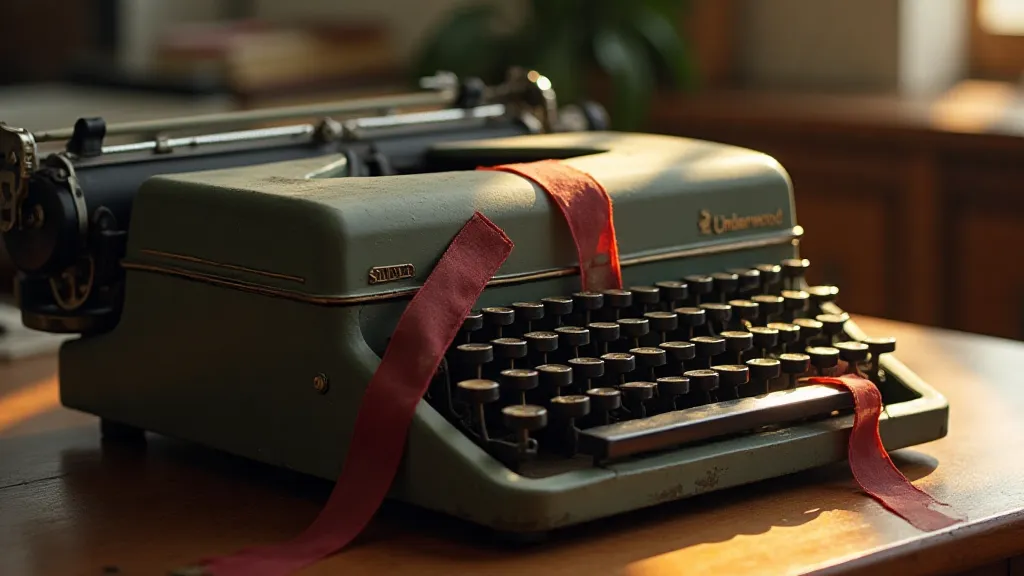
The Art of Preservation & the Collector’s Eye
While the allure of imperfection is undeniable, preserving these relics is important. Restoring vintage typewriter ribbons isn't about achieving a pristine condition; it’s about stabilizing their existing state and preventing further degradation. This often involves careful cleaning, storing them in archival-quality sleeves, and avoiding exposure to direct sunlight and extreme temperatures. True restoration – bringing them back to their original vibrancy – is often impractical and can damage the ribbon’s inherent historical value. It’s more about gentle care and respectful preservation.
The value of a vintage typewriter ribbon extends far beyond its material worth. It's a tangible link to the past, a witness to history, and a symbol of a bygone era. Collectors often seek out ribbons with unique characteristics—rare colors, specific manufacturer markings, or associations with significant historical events. A ribbon used by a famous author, for instance, would hold immense value, not just for its monetary worth but for the story it represents. The condition, of course, plays a crucial role, but the narrative connected to the ribbon often outweighs its physical state. This sentiment is beautifully encapsulated in the exploration of the Cartographer of Echoes, tracing the paths of faded ink and the stories they hold.
The world of collecting these relics is a niche but passionate community, driven by a shared appreciation for history, craftsmanship, and the power of storytelling. Collectors are not simply acquiring objects; they are preserving legacies, safeguarding memories, and ensuring that the voices of the past continue to resonate with future generations.
Finding Your Own Narrative Gold
Whether you're a writer seeking inspiration, a collector preserving history, or simply someone appreciating the beauty of forgotten objects, vintage typewriter ribbons offer a unique window into the past. They're a reminder that creativity isn't always about achieving perfection; it's about embracing limitations, finding beauty in imperfections, and transforming decay into narrative gold. The process of discovering the stories held within these objects is a journey in itself, almost like experiencing Ink’s Last Dance – the alchemy of fading typewriter ribbons.
Consider the profound responsibility that comes with owning a piece of history. These ribbons are not merely objects; they are silent witnesses to countless moments of creativity, struggle, and triumph. They represent a connection to the past, a reminder of the enduring power of human expression, and a call to preserve the stories that shape our world.
So, the next time you encounter a faded ribbon, take a moment to consider its story. Imagine the hands that once held it, the words it helped to create, and the echoes of the past it carries. You might just find that it sparks a new story of your own.
